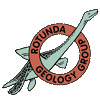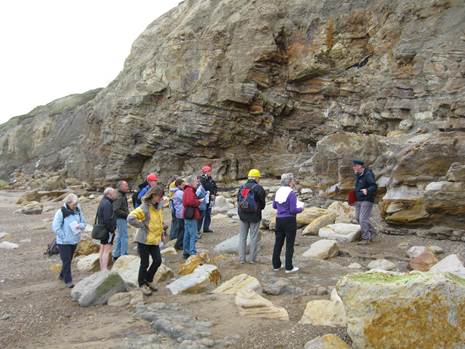We met at Sea Cliff Rd car park and walked down to the shore south of the Holbeck landslip. The morning was spent looking at the sections in the Middle Jurassic Scalby Formation exposed in the cliff. The base of the Scalby Formation was seen to be erosive. We discussed whether the basal massive sandstone should be included in the Moor Grit which is typically much coarser. Stuart analysed sections which gave a 3D exposure of epsilon-bedded sandstones and silty clays and interpreted it as a point bar of a large channel, similar to if not equating with, the point bar exposures of meandering channels seen on the foreshore at Scalby. The abundance of plant remains was noted. These included large stems of Equisitites and pellets of charcoalised wood. Some of the silty layers contained abundant well-preserved plant fragments including the conifer Elatides thomasi and the fern Coniopteris hymenophylloides. Further south the Scalby Formation is dominated by sandstones including the fills of large channels. Some fallen blocks had moulds of dinosaur footprints on their bases.
John Hudson joined us at lunch on the shore. He summarised the events leading up to the large Holbeck landslip which he had witnessed from a boat. We then studied the low cliff behind the promenade south of the Spa. Here the Scalby Formation shows excellent examples of cross-bedded sandstones, erosion surfaces and point bar deposits. One horizon shows numerous shallow burrows formed by the bivalve Unio. However the main interest of the section are several good examples of dinosaur footprints, transmitted down into the sand below a vegetated muddy horizon on which the animal walked. The muddy horizons contain sphaerosiderite indicating reducing conditions in the substrate.

